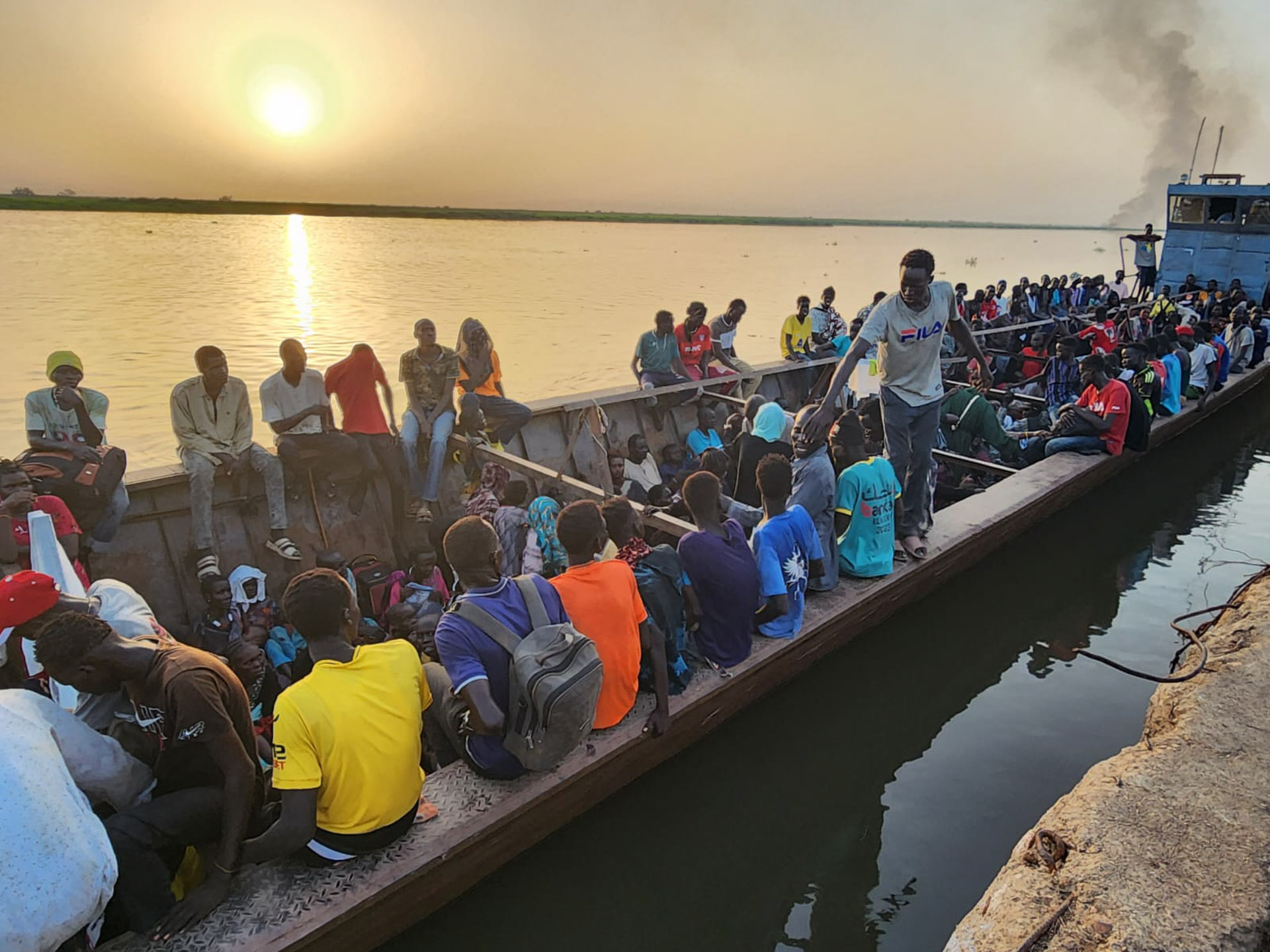Sudan has been gripped by fierce fighting since April 15, 2023, when a power struggle between the Sudanese Armed Forces (SAF) and the paramilitary Rapid Support Forces (RSF) escalated into an all-out civil war, spreading violence across the country.
More than 18,800 people have been killed and over 33,000 wounded since the conflict erupted, according to the United Nations Office for the Coordination of Humanitarian Affairs (UNOCHA).
Amid the devastation, Sudan is facing the world’s most severe displacement crisis. There are 7.9 million internally displaced persons (IDPs) who have been forced from their homes, while approximately 2.3 million have crossed into neighboring countries in search of safety.
According to the International Organization for Migration’s (IOM) DTM Sudan Mobility Update No. 6, released on 20 August, around 62 percent of the displaced are Sudanese nationals, with the remaining 38 percent comprising foreign nationals and returnees.
Approximately 54 percent of the displaced are predominantly female, while 46 percent are male. More than half of the displaced, marking 52 percent, are children under 18—a quarter of these are under five years old, and 28 percent are females.
According to the IOM’s Update, most displaced Sudanese have sought refuge in Chad, totaling 630,000 people, and over 500,000 Sudanese sought asylum in Egypt.
Around 182,000 people went to South Sudan, 77,000 in Ethiopia, 29,000 in the Central African Republic (CAR), and 17,000 in Libya, the IOM’s Update revealed.
Sudanese Refugees Around the World
In Chad, the influx of Sudanese refugees has pushed one of the world’s poorest nations to the brink. With 42 percent of its population living below the poverty line, Chad’s infrastructure is buckling under the pressure of these new arrivals, who are forced into makeshift shelters in informal camps.
They face critical shortages of food and clean drinking water, with essential items like plastic containers in particularly short supply. Additionally, aid agencies are sounding the alarm about the potential for a looming humanitarian disaster due to inadequate support.
Meanwhile, Sudanese refugees in Egypt face severe funding shortages that hinder the United Nations High Commissioner for Refugees (UNHCR) and its partners from providing essential aid. As of July 24, 2024, only 49 percent of the USD 57.7 million (EGP 2.7 billion) needed for the UNHCR’s Sudan emergency response in Egypt has been secured.
South Sudan, which became an independent country in 2011 following a civil war and has only recently emerged from decades of conflict, was already grappling with a severe humanitarian crisis before the outbreak of the war in Sudan and the influx of refugees. According to Jan Egeland, Secretary General of the Norwegian Refugee Council, the country had nine million people in need of humanitarian aid, with nearly 60 percent of its population experiencing high levels of food insecurity.
Sudanese refugees in Libya joined approximately 803,000 people in the country who face an urgent need for humanitarian assistance; among those enduring severe hardships amid the ongoing crisis are displaced Libyans, asylum seekers, refugees, and migrants.
“The needs are many—food, shelter, and water are urgently required,” a Data Management Associate with the UNHCR said, referring to the situation of Sudanese refugees in CAR.
The latest influx of refugees to CAR from Nyala, Sudan, predominantly consists of women and children. Many have detailed harrowing accounts of threats from armed groups, extortion, physical abuse, and sexual violence. Responding to the crisis, the UNHCR and the World Food Programme (WFP) continue to work on constructing shelters, and latrines, and providing essential water and food supplies
In Ethiopia, the situation is no better. Thousands of Sudanese refugees live in a forest near Ethiopia’s border with Sudan after fleeing attacks on UN-run camps by local militias. In the forest, they face dangers from wild animals like hyenas, scorpions, and snakes.
Muggers raid the camps “three or four times a week” to rob and beat refugees, a refugee told Al Jazeera.
Nearing its second year, the war has left Khartoum, Sudan’s capital, lying in rubble while other cities across the country are besieged or destroyed as the conflict continues to ravage the nation.
The international community faces a profound challenge in addressing one of the world’s most severe humanitarian crises, with around 25.6 million people in Sudan now facing acute hunger, according to the Integrated Food Security Phase Classification (IPC).
It is a crisis further exacerbated by a crippled banking sector, restricted access to services, and led to widespread cash shortages, leaving Sudanese struggling to afford basic necessities.







Comments (0)